Intro | Part 1 | Part 2 | Part 3a | Part 3b
Online Dispute Resolution (ODR) is joining the legal landscape in BC, but many people–even some lawyers–are unfamiliar with its processes. We are covering the emergence and expansion of ODR in BC in a series of blog posts. (See our introduction here.)
In recent ODR-related news, the Civil Resolution Tribunal or “CRT” (which we discussed in our first post) has appointed 18 tribunal members. They will hear strata property and small claims cases, and will be able to make decisions that are binding and enforceable like court orders. You can read the press release from the CRT and BC Ministry of Justice here.
In today’s post we focus on Consumer Protection BC’s ODR platform, a neutral online space where people can settle disputes with businesses, without going to court.
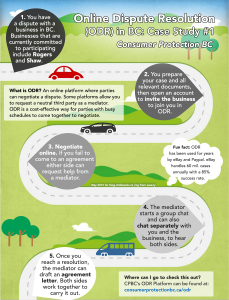
We created an infographic (below, right) which provides a snapshot of the process, from start to finish.
We tested the ODR tool ourselves, giving you an inside peek into the process, with screen captures to provide visual context.
Important note: the steps we took here are not exhaustive of the ways that you can resolve a dispute using ODR.
 Create an account. When you start a new dispute you will be asked questions regarding the nature of your complaint.
Create an account. When you start a new dispute you will be asked questions regarding the nature of your complaint.
 The Dashboard identifies both parties and the stage of the process you are in (e.g. Negotiation).
The Dashboard identifies both parties and the stage of the process you are in (e.g. Negotiation).
 The main focus of the platform is the conversation between you and the business, which is viewable by everyone, as are any documents uploaded to the platform. If a mediator is requested, the mediator can also see the conversation and join in.
The main focus of the platform is the conversation between you and the business, which is viewable by everyone, as are any documents uploaded to the platform. If a mediator is requested, the mediator can also see the conversation and join in.
 Either side can request a mediator with the click of a button. The Request Mediator dialogue box allows you send a message and document(s) with your request.
Either side can request a mediator with the click of a button. The Request Mediator dialogue box allows you send a message and document(s) with your request.
 The message you send to the mediator appears for both parties in the Conversation View with the date and time the request was made. There is also a private chat function between the mediator and each party, so that the mediator is able to get fulsome stories from both the consumer and the business before making appropriate suggestions.
The message you send to the mediator appears for both parties in the Conversation View with the date and time the request was made. There is also a private chat function between the mediator and each party, so that the mediator is able to get fulsome stories from both the consumer and the business before making appropriate suggestions.
 Some people request a mediator before the business has even responded to the initial request to negotiate. In this instance, an ODR administrator will post directly to the Conversation View, encouraging everyone to continue negotiations in good faith, before re-requesting a mediator.
Some people request a mediator before the business has even responded to the initial request to negotiate. In this instance, an ODR administrator will post directly to the Conversation View, encouraging everyone to continue negotiations in good faith, before re-requesting a mediator.
 When you propose an agreement, the business will receive the proposal and will have a chance to accept it or not accept and make suggestions. If a mediator is involved, they are able to help draft agreements that will help the parties come to a resolution.
When you propose an agreement, the business will receive the proposal and will have a chance to accept it or not accept and make suggestions. If a mediator is involved, they are able to help draft agreements that will help the parties come to a resolution.
We hope that was an interesting look into one of the online dispute resolution processes available in BC. Our next post in our series on ODR will cover SmallClaimsBC.ca‘s online platform.
Subscribe to our blog (on the left-hand column) or follow us on Twitter @Clicklaw to receive notifications about new posts.

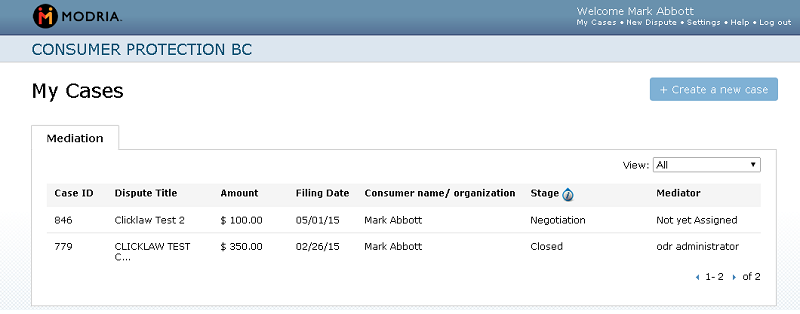
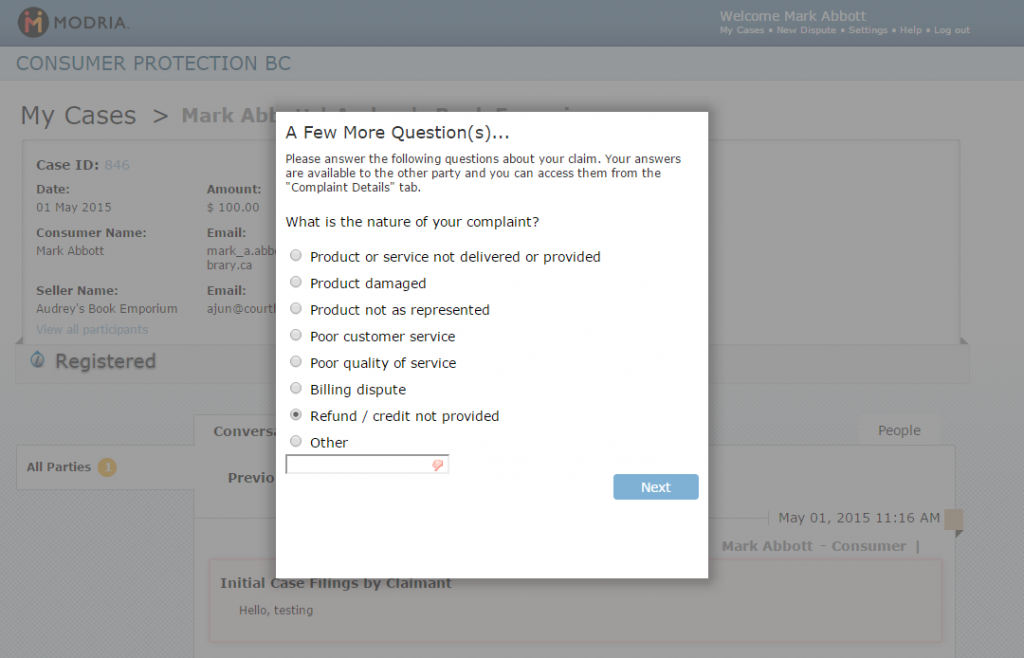
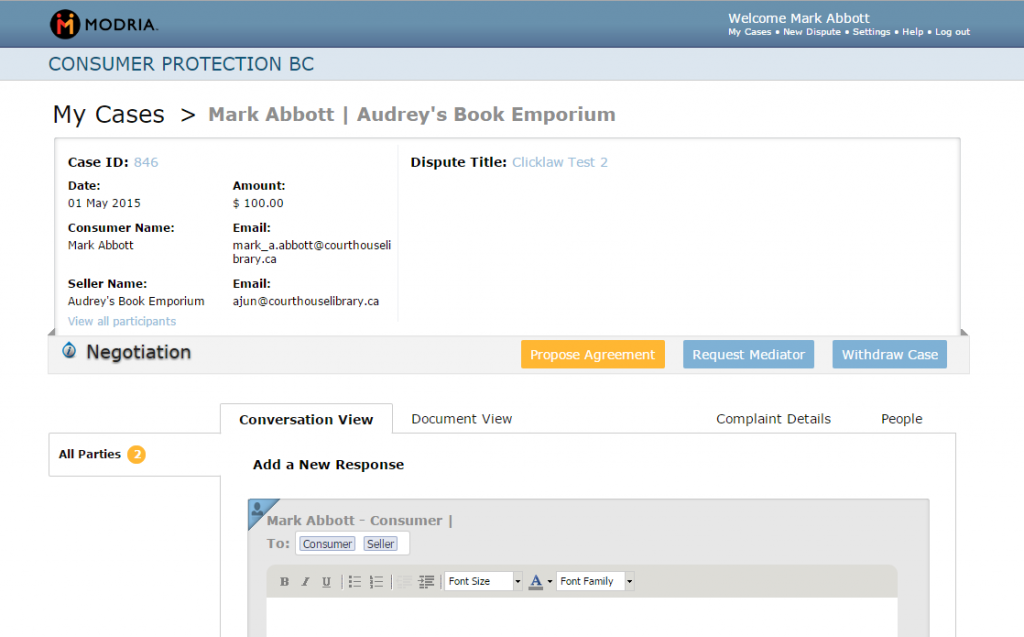
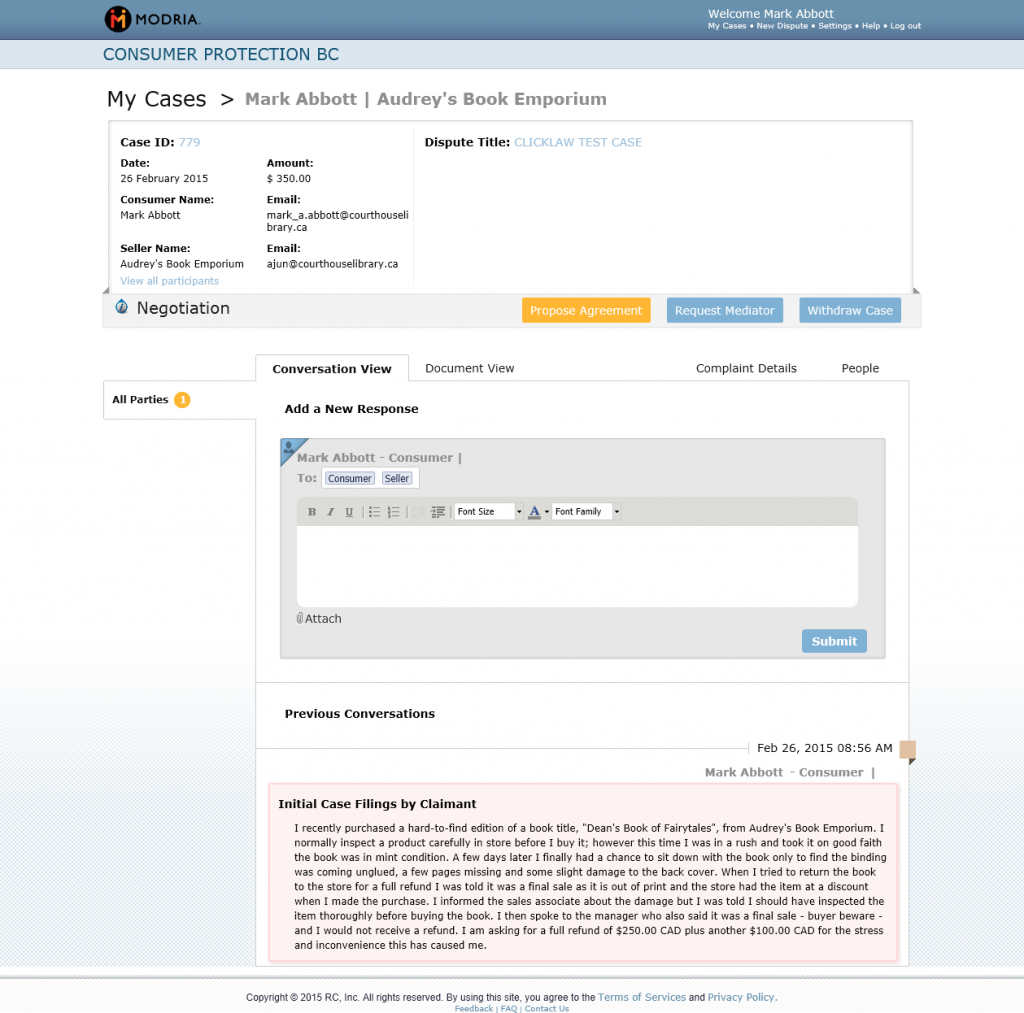
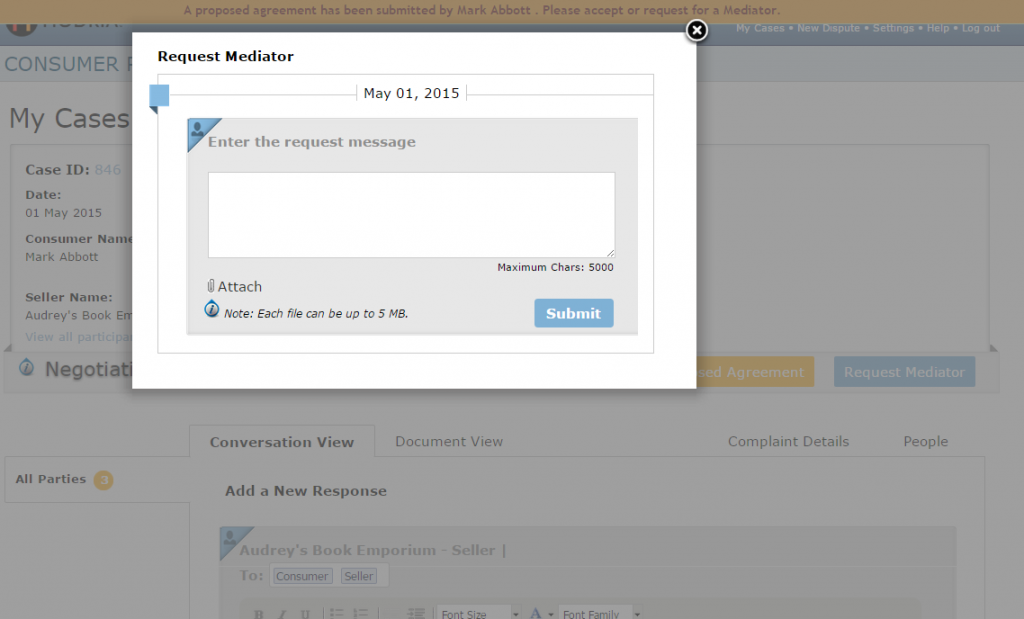
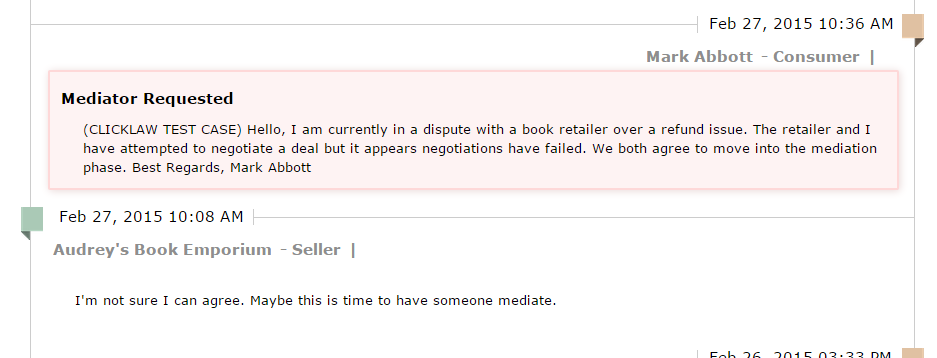
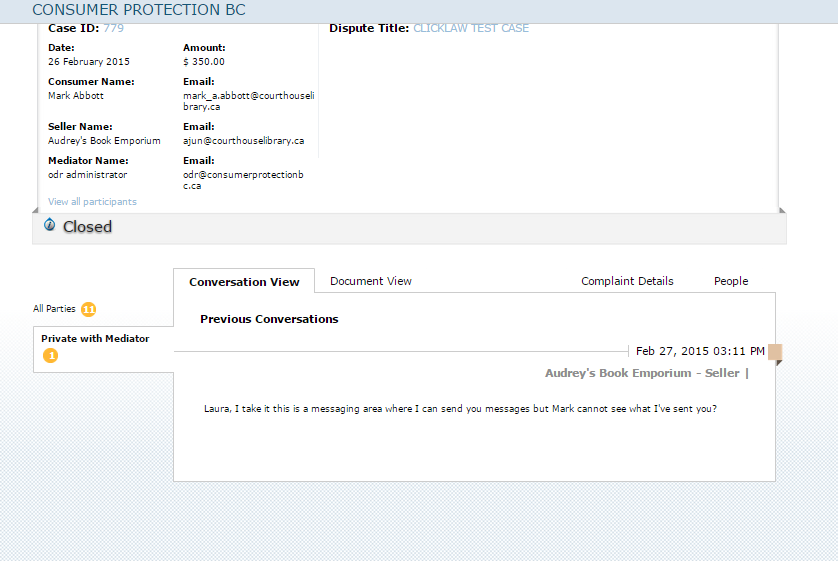
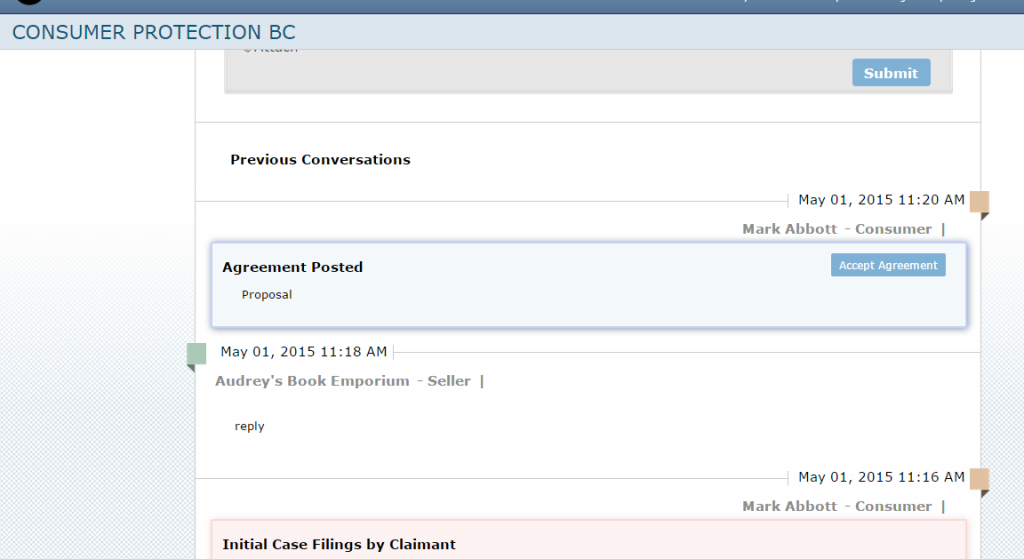


when is the CRT expecting to start accepting claims against BC strata corporations?
Thank you for your comment and question. As of now, the CRT has not announced an official launch date. They plan to launch in late 2015. When the CRT launches, it will start hearing strata and small claims matters. We will be writing about the CRT in the coming months as part of our Online Dispute Resolution case study series. So please feel free to check the Clicklaw Blog for more information. You can also visit the CRT’s blog for news releases and information: Civil Resolution Tribunal